The name of this thick vegetable soup, the main ingredient of which is beets, supposedly comes from the Old Slavic word “bársch”, which meant hogweed, an edible herb whose leaves were used in cooking. Later it was transformed into the word “borscht”. The calorie content of this dish depends on several factors: first of all, on whether the borscht is prepared with meat or vegetable broth.
Traditionally, borscht is considered Ukrainian. However, this is not entirely correct: in one form or another it is present in Russian, Belarusian, Polish, and even Moldavian and Lithuanian cuisines. It has many cooking options - almost every region has its own secrets.
Ukrainian cooks traditionally seasoned borscht with a mixture of crushed lard and garlic. Moscow borscht, according to the recipe, should be cooked in addition, shortly before the end of cooking, finely chopped ham is added to it. Starolitovsky borscht is boiled with bones, seasoned fried and served with porcini mushrooms. Moldavian borscht is prepared using chicken broth, seasoned with vegetables fried in chicken fat. The calorie content of these first courses, as is clear from their description, will differ significantly from the calorie content of vegetarian, or “lenten” borscht, which is often prepared by modern housewives.
100 g of borscht cooked with vegetable broth contains no more than 50 kcal. If you add beans to it, the calorie content will increase to 68 kcal/100 g. As for meat-based borscht, this figure is much higher. Thus, the calorie content of borscht with lard is 98 kcal, borscht with porcini mushrooms and prunes is 109 kcal. 100 g of Moscow-style borscht contains 115.5 kcal, and 119 kcal when cooked in bone broth.
Any type of this dish seasoned with sour cream becomes about 15-20 kcal more caloric. Therefore, the answers to the question of how many calories are in borscht will be different, depending on the characteristics of the preparation of one or another version of it and the products used in it. If necessary, you can determine the calorie content of borscht, like any dish, by calculating the calorie content in its ingredients based on their weight. Since correctly counting calories manually is quite a troublesome task, you can use special online programs for this, which are available on some culinary sites.
However, the calorie content of dishes is not all that lovers of a healthy lifestyle need to take into account. Any broth, even one made from lean dietary meat (and most of all bone broth), poses a potential danger for those who have uric acid metabolism disorders. It is important for such patients to avoid foods containing purines, in particular red meat, organ meats, fish, certain types of vegetables (tomatoes, legumes, sorrel and spinach, Brussels sprouts and cauliflower), and mushrooms. When cooking meat and fish, up to 50% of the purines they contain are released into the broth. When they enter the body in large quantities, they can provoke the development of a serious and unpleasant disease - gout, in which uric acid crystals are deposited in the joints. It is formed in the body precisely from purines, so for those who care about their health, it makes sense to prepare vegetarian borscht. Its calorie content is low, but the benefits are quite noticeable.
Lenten borscht cooked according to the rules contains several types of vegetables that enrich the body with mineral salts and vitamins. In addition, the fiber they contain effectively cleanses the intestines of harmful substances - toxins, nitrates, radionuclides. The ingredients of borscht, in particular beets, have a choleretic effect, so this dish is indicated for cholecystitis and At the same time, the juice effect of vegetable decoctions can harm patients with chronic pancreatitis, causing an exacerbation of the disease. For gastritis with high acidity, borscht should also be excluded from the menu - its calorie content does not matter. In general, those who have diseases of the gastrointestinal tract should consume this dish, prepared either in meat or bone broth, or in a vegetarian version, with caution.
Borscht is considered a traditional first dish of Slavic cuisine. The recipe for its preparation has a centuries-old history. Today, such a dish can be cooked in different ways, as they say, depending on the taste and color - there is no friend. Many housewives take into account the calorie content of beef borscht during the cooking process.
About your favorite dish in numbers
Do you like borscht? Its calorie content per 100 grams of beef varies from 70 to 100 kilocalories. The energy value depends on what ingredients you add.
On a note! Borscht is not only a tasty dish, but also healthy. Broth prepared with beef has a beneficial effect on the cardiovascular system, and vegetables are a source of vitamins.
Traditionally, a standard set of products is added to borscht, in particular:
- white cabbage;
- potato tubers;
- carrot;
- onion;
- beets.
In addition, the taste of borscht can be supplemented with boiled beans, tomato paste, fresh tomatoes, herbs, sour cream or mayonnaise. By adding additional ingredients, the nutritional value of the dish increases. So, the calorie content of borscht with fried beef will vary between 80-100 kilocalories.
On a note! If you want to reduce the calorie content of the finished first course, replace mayonnaise with low-fat sour cream, and add vegetables raw without prior heat treatment.
Also note that the calorie content of borscht with beef and sour cream will depend on what part of the carcass you are preparing the broth from. For example, broth cooked on a beef bone has a nutritional value of 25 kilocalories per 100 g of product, and from meat tenderloin - 30 kilocalories.
We observe centuries-old traditions
Have you been looking for a recipe for making traditional borscht with beef broth? You're in luck, quickly write down the unique recipe. If you cook borscht according to this recipe, its taste will not leave anyone indifferent. After eating one serving of this borscht, you don’t have to worry about your figure. The calorie content of one serving is negligible.
On a note! Oddly enough, but in practice there is a diet during which the main dish is borscht.

Compound:
- 500 g beef pulp (can be on the bone);
- 2-3 tbsp. l. tomato paste;
- 3-4 pcs. potato tubers;
- beets - 1 root vegetable;
- 0.2 kg of white cabbage;
- carrots – 1 root vegetable;
- allspice black pepper, salt - to taste;
- onion head;
- for frying vegetables, refined vegetable oil;
- 2-3 pcs. laurel leaves;
- a bunch of greenery.
Preparation:
- We clean the vegetables and rinse them thoroughly with running water.
- We defrost the beef pulp naturally and also rinse it with filtered water.

- Place a whole piece of beef tenderloin in a pan.

- Fill with filtered water and place on the stove.
- Bring the broth to a boil.
- Remove the foam with a slotted spoon and reduce the heat to low.
- Add laurel leaves, maybe allspice and peas.
- While the beef is cooking, chop the onion.

- Grind carrots and beets on a medium or fine grater.
- Heat vegetable oil in a frying pan.
- Place the vegetables and sauté until softened.

- When the vegetables are ready, add tomato paste.
- Mix everything thoroughly and continue frying for another 2-3 minutes.

- Remove the boiled beef from the broth.
- Let it cool and then chop it into portions.

- Cut the cabbage with a knife or grate it on a special shredding grater.

- Place the potatoes in the broth and cook until tender.
- Then add the prepared vegetable dressing.
- Before serving, add chopped herbs and sour cream to each serving separately.



For lovers of gourmet dishes
Have you ever tried borscht with beet tops? Gourmets have already appreciated the taste of such a first course and were delighted. It is important to use young tops and beet roots. There is no need to add tomato paste or fresh tomatoes. The beets will give the broth a rich burgundy color.

Compound:
- 0.3 kg of beet tops and tubers;
- 150 g onion;
- 1-2 pcs. carrot root vegetables;
- 0.1 kg of sweet bell pepper;
- 0.5 kg beef tenderloin;
- 0.5 kg of potato tubers;
- salt and pepper mixture to taste;
- a bunch of parsley;
- 4 liters of filtered water;
- 2-3 pcs. laurel leaves.
Preparation:

Perhaps almost everyone loves borscht - in any case, most of us will not refuse to try a delicious, aromatic soup with beets. The excellent taste of this dish is not the only thing worth loving about it - after all, borscht is also very healthy. This soup contains ingredients that are healthy for the body - beets, onions, carrots, garlic, cabbage, potatoes and meat. All these products are very useful. When preparing borscht, you can use either fresh or sauerkraut, but it is advisable to use meat that is not too fatty. As a snack for borscht, lard, bread with garlic or garlic dumplings, onions, herbs, croutons, etc. are used. Ukrainian borscht is always served with sour cream.
The calorie content of borscht is influenced by the calorie content of the meat that was used to prepare borscht - pork is the fattest and highest in calories, so the calorie content of borscht with pork will be high, but if you cook borscht with lean beef, then the calorie content of borscht will be much lower. Vegetarian borscht has the lowest calorie content - only 25-30 calories per 100 g, that is, less than 80 calories per cup. The calorie content of borscht with sauerkraut is higher than the calorie content of borscht, in the preparation of which fresh cabbage was used. The calorie content of Ukrainian borscht is about 90-100 kcal per 100 g, the calorie content of green borscht (on the bone, with sorrel, herbs) is 168 kcal per 100 g.
If you love borscht but are counting calories, you can reduce the calories in borscht in several ways. Prepare borscht using lean, boneless meat. This way you will reduce the calorie content of the borscht by reducing the calorie content of the broth in which the borscht is cooked. It is best to cook borscht in chicken or beef broth - it is lower in calories than pork or lamb. When preparing frying for borscht, it is traditional to fry onions and carrots in oil or lard. To reduce the calorie content of borscht, you can sauté them in a frying pan with water. The use of beans instead of potatoes also reduces the calorie content of borscht. There are few calories in borscht with beet tops instead of beets themselves (69 kcal per 100 g).
The calorie content of borscht will be lower if you season it not with mayonnaise, but with low-fat sour cream. It is better to serve bread with borscht not from premium wheat, but from rye or Borodino bread - it not only contains fewer calories, but also goes better with borscht.
Benefits and calorie content of borscht
Despite how many calories there are in borscht, borscht can and should even be eaten by everyone, even those who are on a diet. It is nourishing and healthy; a plate of borscht will completely replace a full meal, both in terms of satiety and the content of useful and nutritious substances. Borscht contains fats, proteins, carbohydrates (both simple and complex carbohydrates), dietary fiber, important amino acids, vitamins and minerals. Borscht contains vitamin A, a well-known antioxidant, which has a positive effect on vision, as well as the condition of the skin and all body tissues. Vitamin PP improves metabolism, participates in energy metabolism, helping the body release energy from fats and carbohydrates. It also lowers blood cholesterol and regulates blood sugar. Vitamin C is an effective immunomodulator; it strengthens our body’s defenses and helps it resist various diseases, especially colds and viruses. Vitamin D strengthens bones, joints, and also has a positive effect on the nervous system. Vitamin E is an antioxidant that preserves our youth and beauty and prevents the formation of cancerous tumors.
B vitamins contained in borscht improve metabolism and help the body effectively convert dietary fats and carbohydrates into energy. They are involved not only in energy metabolism, but also in the synthesis of hormones and enzymes, as well as in cell production. Their positive effect on the nervous system is very strong - they strengthen it, stabilize its functioning, improve memory, attention, stimulate brain activity, tone the nervous system, in addition they relieve stress, fight depression, correct sleep disorders, relieve anxiety, help to win fatigue and cope with nervous fatigue. B vitamins are not only effective antidepressants, they are also an effective preventative against the development of mental illness. They increase performance, improve mood and even lower the pain threshold. In addition, B vitamins have a positive effect on muscle function, including the heart, have a general strengthening effect on the body, increase immunity, and enhance the body’s regenerative abilities. B vitamins, due to their antioxidant properties, slow down aging and effectively prevent cancer; in addition, they have a positive effect on the condition of the skin, nails, and hair.
Borscht is rich not only in vitamins, but also in microelements - such as:
- phosphorus and calcium, which strengthen bones;
- fluoride, which strengthens tooth enamel;
- iron, which prevents anemia; magnesium, which is part of the cells of the nervous tissue;
- sodium, which helps maintain water-salt balance;
- potassium, which improves the functioning of all muscles and removes excess water, salt and toxins from the body;
- zinc and copper, which improve the condition of skin, nails and hair;
- iodine, necessary for the proper functioning of the thyroid gland;
- manganese, necessary for the production of hormones and enzymes and for the stable functioning of the nervous system;
- chlorine, sulfur, aluminum, molybdenum and other important trace elements.
Borscht increases metabolism and promotes intensive breakdown of carbohydrates and fats - that’s why immediately after you eat borscht you feel hot. It fills you with energy, removes toxins from the body, improves digestion, and has a beneficial effect on muscle function and the condition of the cardiovascular system. Borscht improves your performance, stimulates brain function, relieves fatigue and tones. Borscht also increases the production of red blood cells - erythrocytes, which improves blood quality.
Diet borscht recipe
The calorie content of this borscht is very small, but its satiety, taste and content of nutrients are quite high. To prepare you will need:
- lean beef – 300 g;
- 2 potatoes;
- 1 carrot;
- 1 onion;
- 1 medium-sized beetroot;
- 2 cloves of garlic;
- parsley – 30 g (small bunch);
- white cabbage – 100 g;
- 1 tomato
- salt, black pepper - to taste.
First prepare the beef broth. Strain it. In a frying pan in a small amount of water without adding oil, simmer the chopped carrots, tomatoes, onions and garlic for 10 minutes, then add the beets, cut into small cubes and simmer for another 20 minutes. While the vegetables are stewing, finely chop the cabbage. Then transfer the vegetables to the broth, let it boil and add the cabbage. When the broth boils, let it simmer for 5-7 minutes and add the potatoes cut into small cubes into the borscht. At the end of cooking the borscht, add salt and pepper and remove from the heat. Before serving, sprinkle with chopped herbs.
The calorie content of borscht prepared according to this recipe is 87 kcal per 100 g (or about 190 kcal in a standard serving).
Popular articles Read more articles
 02.12.2013
02.12.2013
We all walk a lot during the day. Even if we have a sedentary lifestyle, we still walk - after all, we...
606438 65 More details
Borscht with beef has become a truly international dish. We will look at step-by-step recipes with photos of this rich first course, as well as its energy value, in our article. Believe me, you can eat delicious food without gaining extra pounds!
Simple arithmetic: counting calories
Before we move on to studying recipes, let's figure out how many calories are in borscht with beef and other types of meat. As a result of simple calculations, you can plan your diet correctly and safely for your figure.
Attention! The indicated number of calories is calculated for 100 g of ready-made borscht.
So, let's begin:
- Borscht cooked with pork ribs contains 100 Kcal.
- The energy value of the first course based on pork broth is only 40 Kcal. However, it should be borne in mind that the added ingredients increase the calorie content of borscht:
- potatoes contain 78 Kcal;
- cabbage – 64 Kcal;
- beets – 49 Kcal;
- onion – 41 Kcal;
- carrots – 40 Kcal;
- sour cream – 50 Kcal.
- The calorie content of borscht with beef is 77 Kcal.
- First courses made with chicken broth are considered a dietary option. Thus, its energy value is 34 Kcal.
On a note! Borscht is considered an easily digestible and healthy dish that has a beneficial effect on the functioning of the gastrointestinal tract. Moreover, the calories contained in it normalize the functioning of the entire body, without being stored as extra pounds.
Beef borscht: recipe with photo
Borscht is an amazing dish, because two housewives who cook it according to the same recipe will never turn out the same. Try making beef borscht using chicken broth. It's incredibly delicious!

Compound:
- 250 g beef meat;
- 1.5 liters of purified water;
- 1 liter of chicken broth;
- 4-5 potatoes;
- 300 g cabbage;
- carrot;
- 1 tbsp. tomato juice;
- beet;
- 1 tbsp. l. freshly squeezed lemon juice;
- 1 tsp. granulated sugar;
- 2-3 cloves of garlic;
- greenery;
- refined vegetable oil.
Attention! The number of calories in red borscht is 100 Kcal per 100 g of finished dish.
Preparation:

Attention! The classic recipe for borscht with beef can be supplemented with bell peppers and your favorite spices.
Legendary Ukrainian borscht
Ukrainian beef borscht is truly a culinary masterpiece. A step-by-step recipe for this dish will help you cook it without much hassle.

Compound:
- 0.4 kg beef;
- 2-3 liters of purified water;
- 0.2 kg cabbage;
- 4 potatoes;
- carrot;
- beet;
- 1-2 cm parsley root;
- 2 bell peppers;
- 2 tbsp. l. tomato paste;
- 1 tbsp. l. vinegar;
- 1 tbsp. l. sifted flour;
- 20 g lard;
- 2-3 cloves of garlic;
- 2-3 peas each of allspice and black pepper;
- 1-2 laurel leaves;
- salt;
- sour cream;
- fresh parsley.
On a note! Instead of paste, you can add fresh tomato puree. To do this, peel the tomatoes and chop them.
Preparation:

Advice! To save time and simplify your task, you can cook borscht with beef in a slow cooker. Select the “First courses” option.
Cooking green borscht
Healthy food lovers will love green borscht. The classic recipe with beef is so simple that even an inexperienced housewife can master it.

Compound:
- 0.5 kg beef;
- 300 g sorrel;
- 2.5-3 liters of purified water;
- refined vegetable oil;
- 2-3 potatoes;
- carrot;
- 2 eggs;
- salt;
- seasoning blend
Preparation:

One of the most beloved and popular soups is borscht. It is very satisfying, healthy and incredibly tasty. A plate of borscht is a complete meal, after which you are guaranteed not to want to eat for at least 3-4 hours, this soup is a real storehouse of vitamins, microelements, amino acids, organic acids and other beneficial substances necessary for our health. There are many types of this dish, and each housewife prepares it in her own special way, but basically the composition and calorie content of borscht are approximately the same.
Sources of borscht calories are fats, proteins and carbohydrates. Fats are found in meat and oil in which you fry vegetables before adding them to soup, proteins are found in meat and vegetables (for example, potatoes), carbohydrates are found in vegetables. A very important element in the composition of borscht is vegetable fiber - it is thanks to fiber that borscht satisfies hunger for so long, in addition, fiber helps cleanse the body, it removes toxins and waste from it and helps the intestines in its work.
Borscht is a source of a number of vitamins. Vitamins do not add calories to borscht, but the benefits from them are enormous. Vitamin A improves skin condition and fights free radicals, in addition, it improves vision. Vitamin PP lowers blood sugar and cholesterol levels. Vitamin C strengthens the immune system, increases the body's defenses, and participates in redox reactions in the body. Vitamin D also strengthens the body's immune system and contributes to the normal development of the nervous system, strengthens bone and connective tissue and improves the functioning of the nervous system. Vitamin E is known for its strong antioxidant properties; it reduces the risk of cancer and slows down the aging of the body. B vitamins strengthen the nervous system, increase a person’s performance and resistance to stress, improve sleep and mood, memory, attention, and also normalize metabolism. These are real natural fat burners, antidepressants and energy drinks.
Also, the calorie content in borscht does not increase, but mineral compounds significantly increase its usefulness. Borscht contains phosphorus, which activates the functioning of the brain, calcium, which strengthens bone tissue, and fluoride, thanks to which our teeth are strong and beautiful. It contains a lot of iron, which prevents the development of anemia and maintains normal hemoglobin levels in the blood.
Borscht also contains magnesium, which is a necessary element for all reactions in the body, sodium, which regulates the water-salt balance, potassium, which strengthens the heart, improves muscle function and promotes the removal of salts and toxins from body tissues, zinc, which improves immunity and regenerative abilities body, copper, which makes nails and hair beautiful and healthy, iodine, necessary for the functioning of the thyroid gland, manganese, which is needed for the synthesis of enzymes and hormones, sulfur, chlorine and other important trace elements.
Having a low calorie content, borscht helps to increase the speed of metabolic processes in the body, stimulates the functioning of the brain and nervous system, strengthens blood vessels and the heart, improves immunity. It contains organic acids that promote the rapid breakdown of fats and carbohydrates that enter our body with food to obtain energy, and beets contain pectins that remove toxins, heavy metal salts and other harmful substances from the body. It improves blood composition and increases the hematopoietic function of the body, tones and fills with energy.
How many calories are in borscht
Borscht ingredients are only natural products: meat, potatoes, vegetables, seasonings. How many calories are in borscht depends on these ingredients. If you use fatty meat to prepare borscht, then the calorie content of this soup will be high, but the calorie content of borscht with lean meat will be low. The calorie content of vegetarian borscht will be even lower - no more than 25-30 kcal per 100 g, but we must not forget that meat contains essential amino acids that we cannot get from plant foods, so we should not give up animal proteins, and meat borscht tastes better than vegetarian borscht. The calorie content of borscht is also affected by those products that you use as a dressing and appetizer for this soup - sour cream, mayonnaise, croutons, donuts, lard, croutons, etc. The calorie content of borscht with sour cream will be much lower than the calorie content of borscht with mayonnaise. 
To reduce the calorie content of borscht, use lean beef. Borscht with pork will be higher in calories. If when preparing this dish you used broth cooked with meat and bones, then the calorie content of such borscht will be higher than the calorie content of a similar dish cooked with meat broth. When frying onions, carrots and beets, use a minimum of oil, fry the vegetables in a non-stick pan - then you will need less fat, which means the calorie content of the borscht will be lower. You can further reduce the calorie content of borscht if you completely abandon oil when preparing frying– simmer vegetables in a small amount of water or broth prepared for soup. It also reduces the calorie content by using beans instead of potatoes, and beet tops instead of beets. The calorie content of borscht, in the preparation of which sauerkraut was used, will be higher than the calorie content in the same borscht, but with fresh cabbage.
On average, the calorie content of borscht made with lean beef is 45-55 kcal per 100 g. The calorie content of classic Ukrainian borscht, which is cooked with bones and fatty meat and always served with sour cream, will be about 100 kcal per 100 g (including sour cream). The calorie content of summer green borscht on a meat bone, served with herbs and sour cream, will be about 160 kcal per 100 g.
Season the borscht not with mayonnaise, but with low-fat (up to 15% fat) sour cream. It is best to serve rye or black bread with borscht - it has fewer calories and more nutrients.
Dietary borscht recipes
The calorie content of borscht prepared according to the classic recipe is 87 kcal per 100 g. To prepare it, take 300 g of lean beef, 1 onion and 1 carrot, 2 medium potatoes, 1 medium-sized beet, 100 g of fresh white cabbage, 2 cloves of garlic, a bunch of fresh parsley, 1 tomato, pepper and salt to taste. Boil and strain the beef broth. In a small amount of water, simmer the chopped onions and carrots with garlic and tomato for about 10 minutes, then add the chopped beets. Chop the peeled potatoes and shred the cabbage. Place the stewed vegetables in the broth and place the pan on the fire. When the water boils, add the cabbage; after the next boil, add the potatoes. Boil the soup until the potatoes are ready, serve with herbs and low-fat sour cream.
The calorie content of vegetarian borscht is only 23 kcal per 100 g. It is prepared in exactly the same way as in the recipe described above, but not with meat broth, but with vegetable broth. For 1.5 liters of water you will need 1 beet, 2 potatoes, 300 g cabbage, 1 onion and carrot, 1 tomato, herbs, salt, pepper and sour cream with which you will serve this soup.
If you liked this article, please vote for it:(25 Votes)

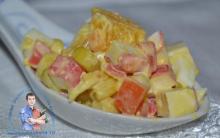
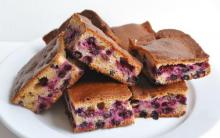

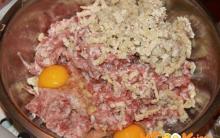
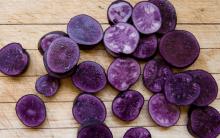
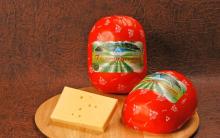




MTPL insurance rules
SS-Waffen soldier Munk Jan: At the Dnieper line - memories of the enemy
Processing of primary documentation: requirements, example
What is reserve capital?
General and general production expenses: definition, composition, accounting and distribution